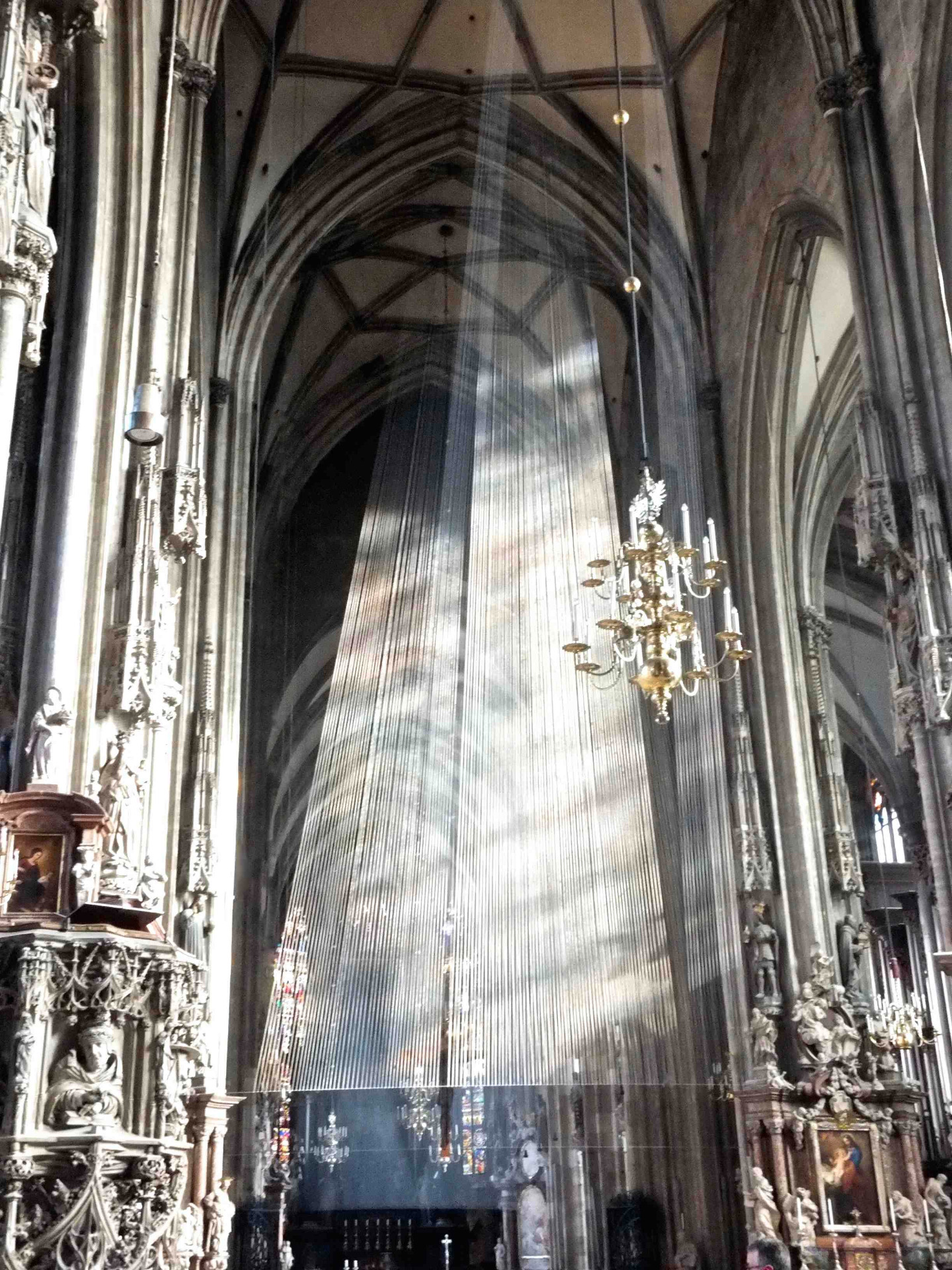
Elke Maier, DAS FASTENSCHLEIERTUCH 2014, Eine Rauminstallation im Stephansdom in Wien

Elke Maier,. INS LICHT GETAUCHT, 2010/11, Eine Rauminstallation in der Kollegienkirche Salzburg, Foto:© Helmut Wegenkittl

Elke Maier,. INS LICHT GETAUCHT, 2010, Eine Rauminstallation in der Kollegienkirche Salzburg, Foto: © Wegenkittl

Elke Maier & Georg Planer, 2006: Ein Tag in tausend Jahren - Kunst & Archäologie, Stiftskirche Wilten Innsbruck copyright©Elke Maier

Elke Maier,. INS LICHT GETAUCHT, 2010, Eine Rauminstallation in der Kollegienkirche Salzburg, Foto: © Wegenkittl

Elke Maier,. INS LICHT GETAUCHT, 2010, Eine Rauminstallation in der Kollegienkirche Salzburg, Foto: © Wegenkittl

Elke Maier, SPACEd, 2021, Rauminstallation im MMKK, Museum Moderner Kunst Kärnten. Foto:©Ferdiand Neumüller


Elke Maier & Georg Planer, 2006: Ein Tag in tausend Jahren - Kunst & Archäologie, Stiftskirche Wilten Innsbruck copyright©Elke Maier
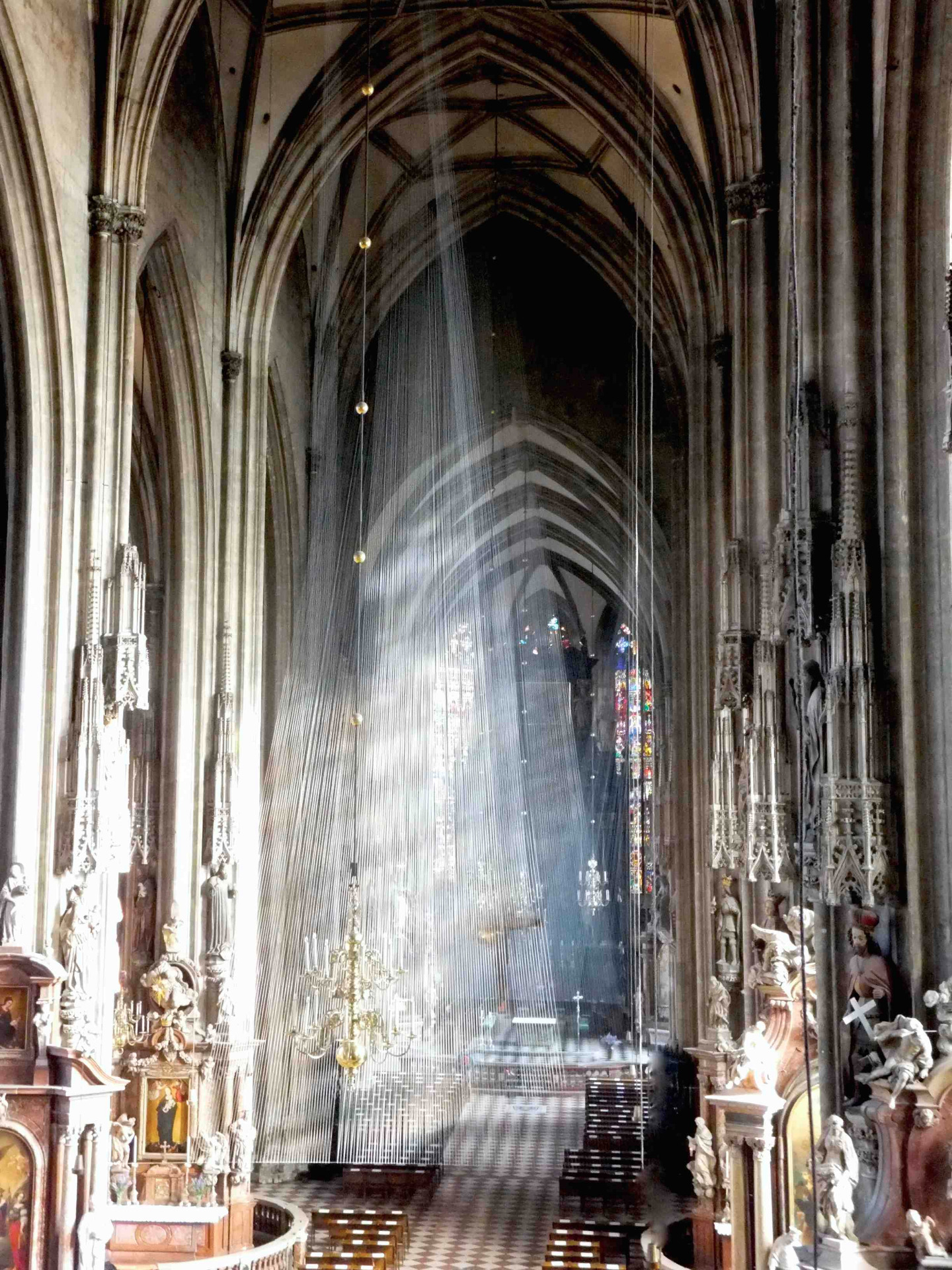
Elke Maier, Das Fastenschleiertuch, 2014, Eine Rauminstallation im Stephansdom in Wien

Elke Maier,. INS LICHT GETAUCHT, 2010, Eine Rauminstallation in der Kollegienkirche Salzburg, Foto: © Wegenkittl
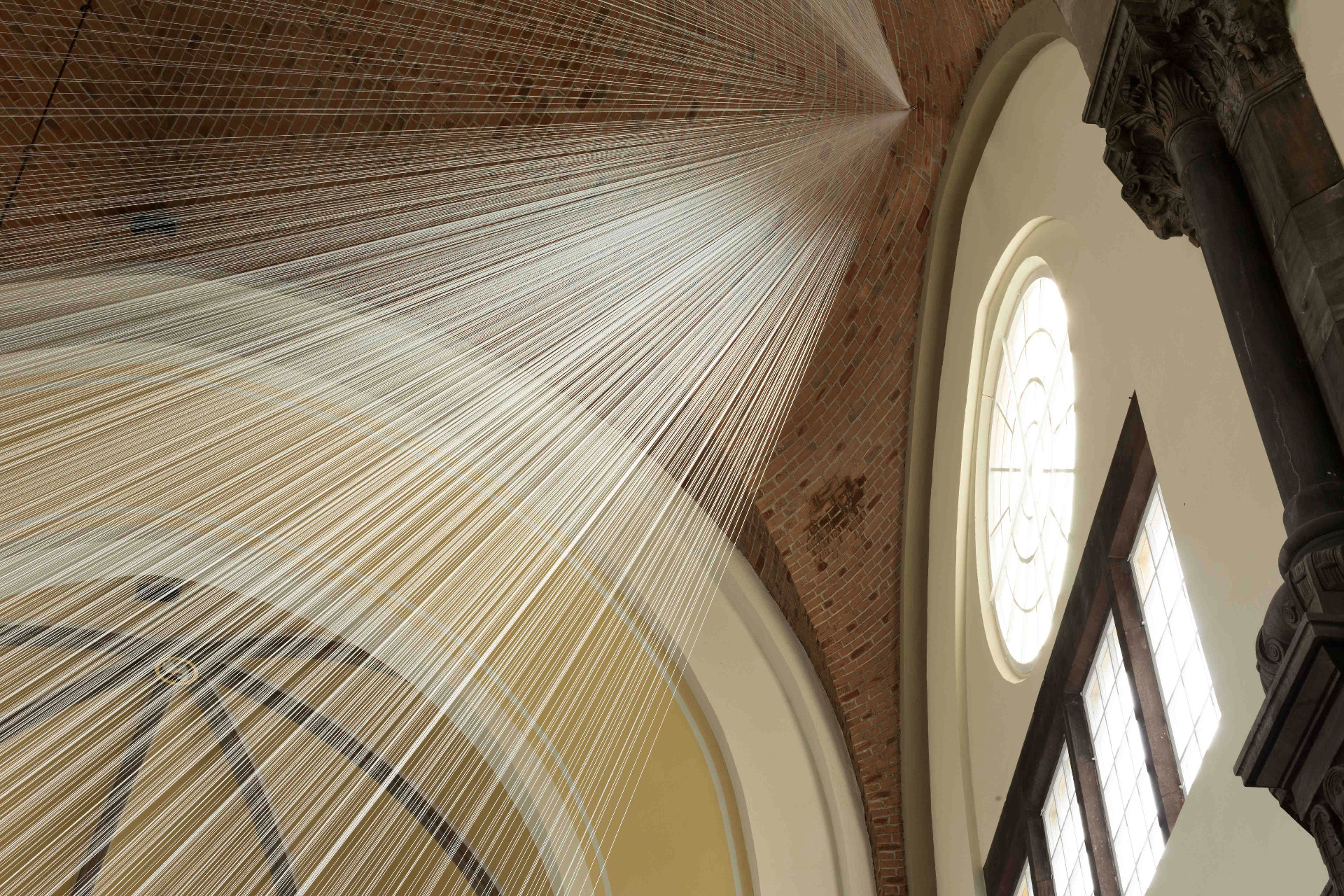
Elke Maier, LICHTUNGEN, 2017: Installation in der Markuskirche in Hannover Foto:© Andre Germar
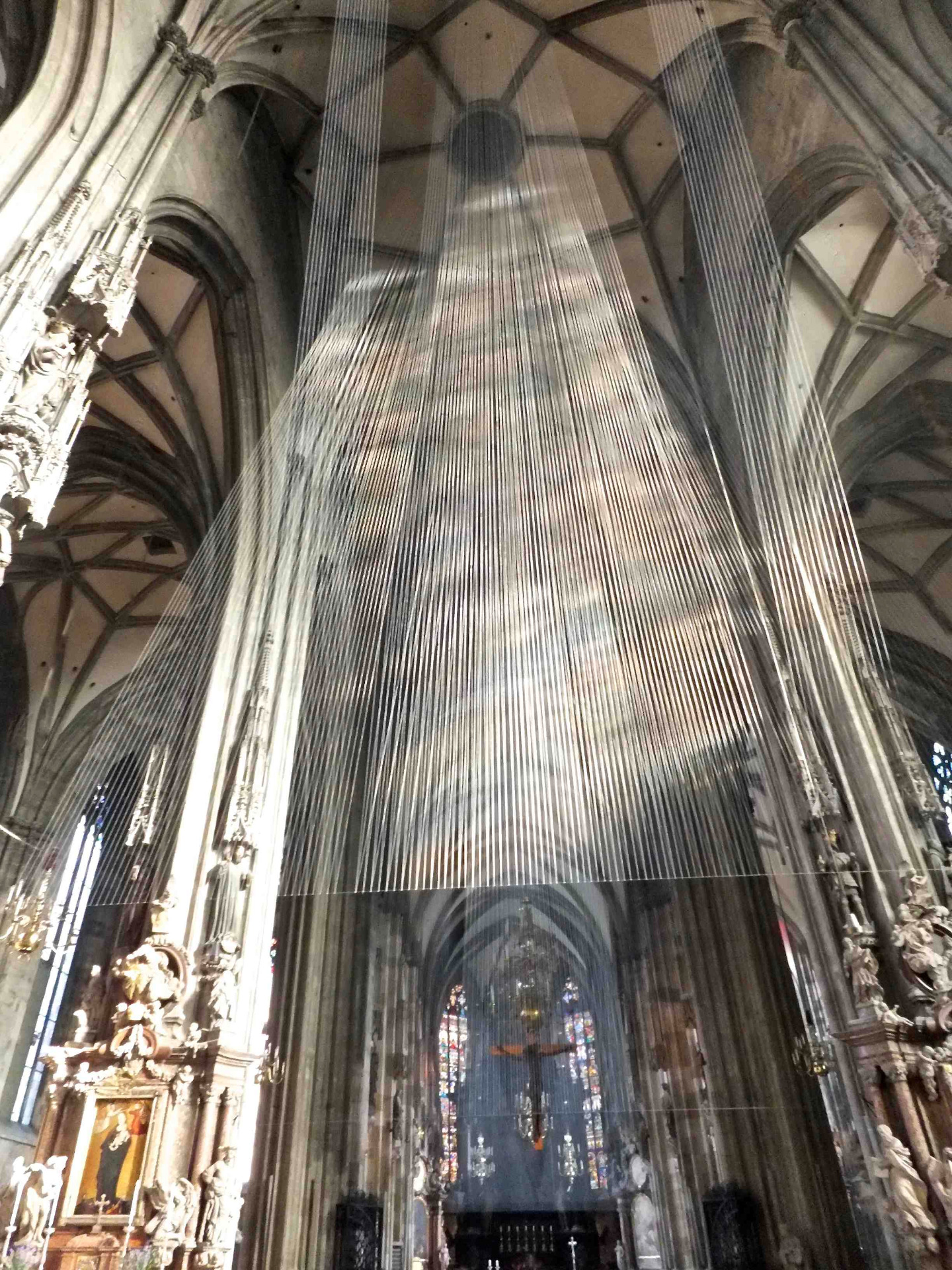

Elke Maier, Das Fastenschleiertuch, 2014, Rauminstallation im Stephansdom in Wien
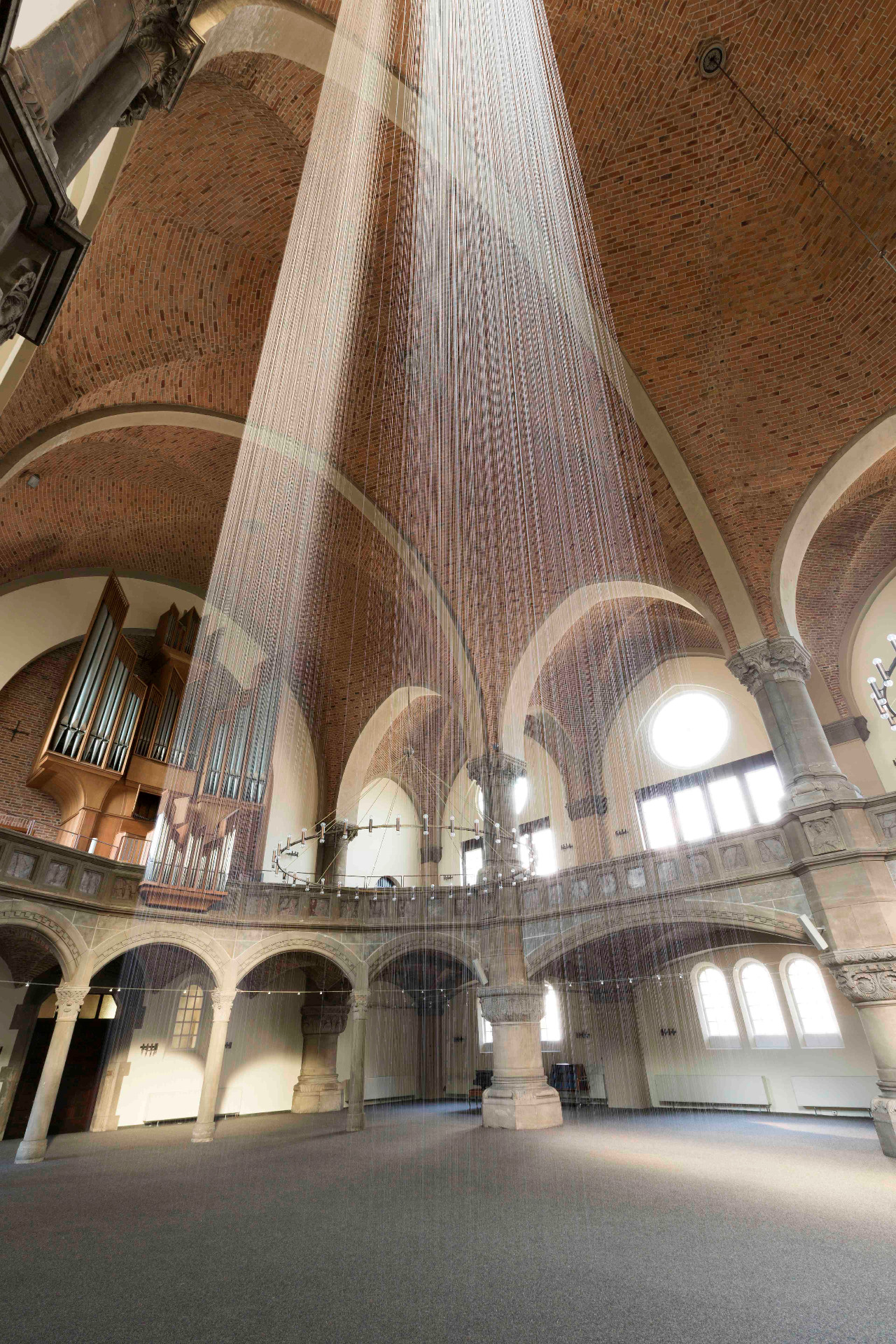
Elke Maier, LICHTUNGEN, 2017: Eine Raum Installation in der Markuskirche in Hannover Foto:© Andre Germar

Elke Maier, 2022: FADENSCHEIN, Eine Rauminstallation in der Johanniterkirche in Feldkirch

Elke Maier, 2005: Rauminstallation im Dom zu St. Jakob in Innsbruck copyright©Elke Maier


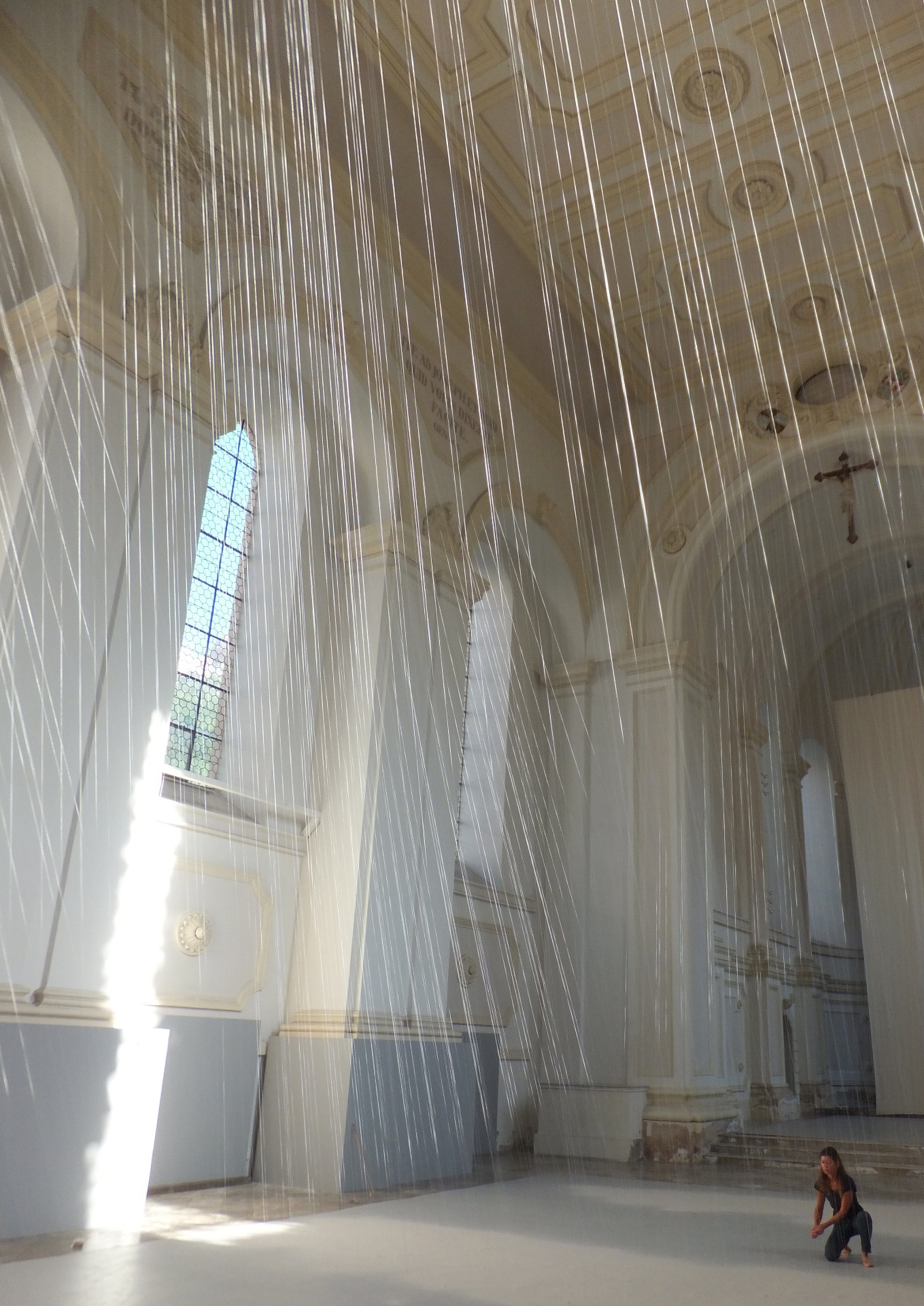




Die
1965 in Bayern geborene und seit 1996 in Gmünd, Kärnten, lebende
Künstlerin Elke Maier studierte von 1986 bis 1993 Malerei an der
Akademie der Bildenden Künste in München. Bekannt ist sie in erster
Linie für ihre Interventionen in zumeist sakralen Architekturräumen, die
sie unter anderem bereits im Wiener Stephansdom, in der Kollegienkirche
Salzburg, im Innsbrucker Dom oder der Markuskirche Hannover umsetzte,
und die sich durch eine intensive Auseinandersetzung mit dem Innenraum
und dem im Raum wirkenden Licht auszeichnen.
Ihre künstlerische
Entwicklung ist im Gebrauch von Naturmaterialien und dem Arbeiten im
Freien begründet. Schon in ihren Anfängen ging es ihr mit ihren
Interventionen um eine ortsspezifische Bezugnahme und das Einfangen
unterschiedlicher Lichtstimmungen, um eine entgrenzte Raumerfahrung und
das sich Aneignen der Arbeit durch Bewegung im und um das Kunstwerk im
Sinne von Land Art Projekten. Ihre markante Technik - die Verwendung
dünner weißer Seiden- oder Baumwollfäden, mit denen sie in Hunderten
Arbeitsstunden transzendente, raumfüllende Lichträume erzeugt -
entwickelte Elke Maier ursprünglich im Freien und übertrug diese präzise
und arbeitsintensive Technik ab der Jahrtausendwende in Innenräume.
Auch
mit ihren speziell für die Räume entwickelten Rauminstallationen greift die Künstlerin ganz bewusst in den profanierten
Sakralraum ein und erzeugt wie schon in vergangenen, auf den jeweiligen
Ort Bezug nehmenden Interventionen "ein einzigartiges auratisches
Wechselspiel zwischen Licht, Raum und Materie." Die Sakralräume kommen
ihrer Arbeitsweise entgegen, denn obzwar ortsspezifisch angelegt,
reichen ihre Installationen weit über räumliche Grenzen hinaus, indem
sie eine metaphysische Befragung des Raumbegriffs selbst implizieren.
Dabei kommt ihr die jeweils veränderte natürliche Lichtsituation
entgegen, die die Fäden mal zum Strahlen, dann wieder gänzlich zum
Verschwinden bringt. "In dem Oszillieren zwischen Sichtbarkeit und
Unsichtbarkeit entstehen offene, transparente Räume, die selbst keine
Grenze haben und so innerhalb architektonischer Grenzen ein Moment der
Unendlichkeit schaffen."
Das oftmals wochenlange Arbeiten an den
Installationen ist wesentlicher Teil der Kunstwerke selbst und
untrennbar mit diesen verbunden. Die sorgfältige und straffe Spannung
der Tausenden Fäden verlangt zwar körperlich einiges von der Künstlerin
ab, doch der Arbeitsprozess selbst entfaltet sich in der steten
Formfindung und Kontinuität zu einer nahezu meditativen Tätigkeit. "Ich
denke Form nicht als Grenze", expliziert die Künstlerin ihre
ästhetischen Grundsätze, "sondern als Prozess, als den Niederschlag von
Spuren einer Bewegung im Raum. Gestalt und Raum bilden keine
entgegengesetzte Polarität, sondern ein Kontinuum beide gleichermaßen
durchwirkender Bewegungen, die sich im Übergang von einem zum anderen
vollziehen und sich als Verwandlung vollziehen müssen."
The
artist Elke Maier, born in Bavaria in 1965 and living in Gmünd,
Carinthia, since 1996, studied painting at the Academy of Fine Arts
Munich from 1986 to 1993. She is predominantly known for her
interventions, most of the time in sacred architectural spaces, which
she has already realized in Vienna's St. Stephen's Cathedral, the
Collegiate Church Salzburg, the Dome of Innsbruck, or Markuskirche in
Hannover, among others, and which are characterized by an intensive
interaction with interior, space and the light acting upon the room.
Her
evolution as an artist is founded in the use of natural materials and
working outdoors. For her, from her very beginnings, her interventions
have been about site-specific reference and the capturing of different
lighting atmospheres, about a spatial experience without boundaries and
the work's appropriation by moving in and around the piece of art in the
sense of land art projects. The use of thinnest white silk or cotton
threads, employed by her to create transcendental, room-
filling
spaces of light in hundreds of working hours, is a distinctive technique
that Elke Maier originally developed outdoors, transferring this
precise and laborious technique to interior spaces from the turn of the
millennium.
With her spatial installations developed especially for
the location, the artist again deliberately intervenes
into the profaned sacred space, generating, as in past interventions
with reference to the respective place, 'a unique auratic interplay
between light, space and matter.' Sacred spaces suit her working method,
as her installations, though designed as site-specific, reach far
beyond spatial limitations by implying a metaphysical questioning of the
very concept of space. In doing so, she benefits from the natural light
situation that is different each time, once making the threads beam,
then again making them disappear completely. 'In the oscillation between
visibility and invisibility, open, transparent spaces are generated
that have no limit themselves and thus create a moment of infinity
within the architectural boundaries.'
The work which often takes
several weeks is an essential part of the pieces of art themselves and
inextricably linked to them. For the artist, the diligent and tight
tensioning of thousands of threads may be physically demanding, but the
work process, through its constant form finding and continuity, evolves
into an almost meditative activity. 'I don't think form as a boundary',
the artist explains her aesthetic principles, 'but as a process, as the
reflection of a movement's traces in space. Shape and space do not form
an opposite polarity but a continuum of movements equally pervading
both, taking place at the transition of one to the other and required to
take place in the form of a transformation.'